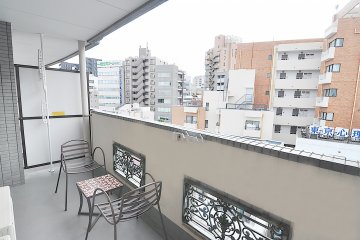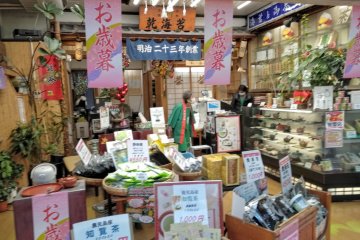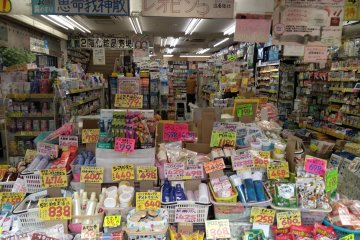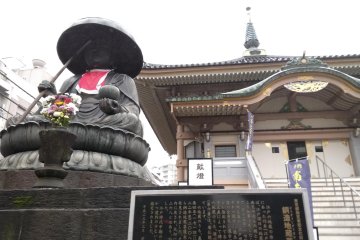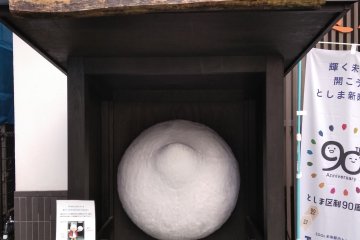It’s easy to see red in Sugamo. The town, in Toshima, Tokyo, has stores sprouting bright red clothing, and the best seller is underwear – for oldies! This is no marketing ploy but a tradition woven in with history and health.

Red is a lucky colour in Japan, and has been for centuries, purportedly since 300 AD. The brightness of the colour is relied on to frighten off evil and bad luck, while attracting the gods to our pleas and prayers. The aspect of red that seniors tap into is its vibrancy and vitality, factors in good health and longevity. The ensuing belief is for anyone above 60 being encouraged to sport red, the closer to the body, the better. Red, the colour of blood, invigorates blood circulation, and much needed for seniors, refires waning energy levels. The small print – no red undies when sleeping. It might work too well, over-energizing us to the point of sleeplessness.
About 200 stores on Sugamo’s 800 metre long shopping street, the Jizo Dori, are oldies-oriented. The flat streets are made with bricks that prevent tripping and slipping. No fewer than eight are drugstores, with two pharmacies and three apothecaries. Shoe shops sell orthopedic shoes, clothes shop specialize in sensible clothes. Almost every store is filled with special offers to accommodate seniors on a budget.

Obvious also along the jizo dori, is Sugamo's mascot, a duck. Sugamo translates into "duck nest". One representation of this as a large cute ball of cuddly fur. Like much of the attractions around, it is a lucky object, stroked for wishes to come true. It is surprisingly still white as snow.

Many of the shops still retain the original family ownership and management. They are atmospheric with olden days decor and furniture, reminiscent of the Showa period from 1926 to 1989. But Sugamo’s origins go further back to the Edo period (1603 – 1868). It was then a post town, a rest stop for travellers, on the former Nakasendo road from Nihonbashi to Kyoto. Sugamo expanded as the fame of its two temples, dedicated to safety of travellers and all their anxieties, spread.
We know the temples today as Koganji and Shinshoji. Sugamo boomed when Koganji was moved to Ueno in 1891, with older followers flocking in because of the prayers that had been answered specifically for healing. Koganji is where you wash the part of the Goddess Kannon’s statue troubling you. Here also is the Togenuki Jizo. You eat an edible holy paper after you have placed it on whichever part of the Jizo’s body reflects your own aches. It is made of Japanese washi paper, 4cm high and 1.5cm wide. After you.

Shinshoji’s massive jizo statue is much visited because it is one of Tokyo’s six such similarly large Jizo statues, each guarding the entrance to an ancient Edo highway, as well as the travellers going through them. Shinsoji’s jizo cast in bronze was completed in 1714.
There is another temple, Koshinzuka. Here prayers for safe journeys flow towards two red scarfed guardian monkeys. There is also a resident deity, the God of Roads and Travels. This still supports senior citizens. Aging, after all, is just another journey.






